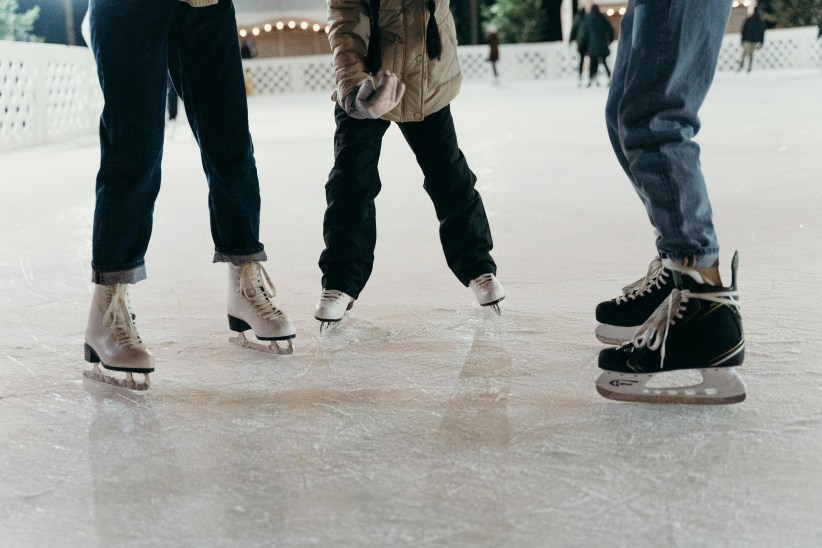
Artistically and culturally, New York City is one of the world’s richest places. There are over 50 museums here that are open almost any day of the week, and most of them eagerly welcome even the youngest visitors. But for small visitors (and sometimes adults, too) museums can be very intimidating places, especially large institutions with encyclopedic collections and endless galleries. Sometimes it’s hard to figure out where to start—so here’s some practical advice from a seasoned guide on how to take your kids to museums without having to hop on a tour.
GENERAL TIPS
A museum trip should be both fun and educational. Start young, so kids can get used to the idea that museums can be full of adventure. With children as young as two, you can hit up places with great “discovery potential,” like the Met’s awe-inspiring Temple of Dendur or its Astor Court fish pond, both of which have plenty of space for sitting and drawing. When children are around three, you can start planning visits as long as an hour.
Before heading out, let the kids know where you’re going and what you’ll be seeing. Start with one aspect of the museum that might entice them—like the spiral form of the Guggenheim Museum or the annual roof installation at the Met—and share captivating facts about either the artists or the venue to get them excited. Read up beforehand, so you can summarize the introductions usually displayed on the walls once there. You’ll also want to pick seven to ten artworks to focus on, or choose a section to stay within if you’re at a large institution, so you don’t tire the kids out.
But what about the older kids who have pegged museums as boring? Start small and spice things up by suggesting a city-wide scavenger hunt with a museum as one of the destinations, or make a connection between the exhibits and a book they might be reading. Think about what kids typically enjoy. A mystery? An adventure? A challenge?
GAMES TO PLAY
No matter their age, the best way to interest children and focus their attention is to play games that are fun but also help them practice observation, analysis, and memory. Here are some ideas; art history knowledge not required:
For 3- to 8-year-olds
Play “I spy…” Select a few objects in a particular painting for children to find. For example: “I spy three cats in the painting of a little boy in a red outfit.”
Ask the children to look at a portrait and compare themselves to the person they see in that picture. What is the same? What is different? What is the clothing like? What is that person doing? Is that person smiling? Sad? Angry?
Every work tells a story—let your child make one up.
Choose age-appropriate games such as finding shapes, alphabet letters, or colors in specific pieces of art.
For 8- to 12-year-olds
Select a theme for your trip and look only for objects that correspond with that theme. For example, point out what animals are commonly used in art or go on a mission to find paintings and sculptures of monsters and dragons.
Outfit your young art explorer with a magnifying glass and make a detective game out of spotting hard-to-see details, like cracks or repairs on an ancient sculpture. Or have them go on a scavenger hunt for specific materials—ask them to find something made of stone, wood, metal, glass, etc.
A memory game is great for practicing observation and retention skills. Have the kids look carefully at all the details in one work, from colors to shapes to placement. Ask them to turn around and, to win points, answer your questions about the artwork. Then switch places and make it a kids versus adults competition.
If your child is reading an adventure series like Harry Potter or Percy Jackson, it’s very likely that the books evoke creatures from the Ancient world. Perhaps little bookworms have come across centaurs, Cyclops, or mythical gods.Challenge them to find these characters on vases and other works—this is how old art can come alive in their imaginations.
For all ages
Let the children experience being artists themselves. Bring colored pencils and paper and let them create their own masterpieces—most museums will allow kids to sit on the floor and get to work right in the galleries. If you’ve got budding artists on your hands, you can also take along some Scotch tape, stickers, and pieces of fabric to make collages. Hint: for those who don’t want to lug around art supplies, many museums also offer regular workshops to complement the exhibits on view.
In the end, the most important thing you can do is encourage any kind of participation. Simply talking about the art and thinking about it both during and after the trip will help kids take away something from it. You can consider your trip a success if your children had fun—which sets the foundation for wanting to go back for more.
Natasha Schlesinger is an NYC mother of three. She is the founder of Artmuse, which offers interactive art tours to both kids and adults, and the co-founder of ArtXplorers, a multimedia arts website for kids.
ON SHOW NOW: NATASHA’S PICKS FOR KIKDS
Now through January 3, 2013
Caribbean: Crossroads of the World
El Museo del Barrio, Queens Museum of Art, The Studio Museum
This exhibition consist of over 500 objects spanning 400 years across three NYC museums. It presents a great visual history of the Caribbean culture and its diaspora, and kids will respond to the great diversity of materials, colors, and whimsical aspects of so many of the works on view. (An entry to one of the museums will get you a passport to the other two.) elmuseo.org, queensmuseum.org, studiomuseum.org
September 7 through January 20, 2013
“Bound, Unbound: Lin Tianmaio”
Asia Society
Lin Tianmaio is an important Chinese artist. In her first American retrospective, she uses fabric as her medium to express physical forms that are beautiful and fantastical. Though sometimes unexpected, the works are a sight to see regardless of how old (or young) you are. Ages 8 and up. asiasociety.org
September 12 through February 13, 2013
“Ooh, Shiny!”
American Folk Art Museum
What kid isn’t attracted to shiny, sparkly things? In this exhibition, mini museum-goers will get a chance to explore basic human creativity and the need to use materials that attract the eye. Ages 2 and up. folkartmuseum.org
September 18 through December 31
Regarding Warhol: Sixty Artists, Fifty Years
Metropolitan Museum of Art
The art world in the late 20th century was defined by Andy Warhol, and countless artists emulated and followed in his footsteps. Kids will recognize the everyday objects that Warhol paraded in his art—perfect for playing “I spy.” Look for modern interpretations like an ancient Chinese vase painted with a Coca-Cola logo. Ages 6 and up. metmuseum.org
September 21 through February 3, 2013
“Circus and the City: New York 1793-2010”
Bard Graduate Center
Bard’s intimate galleries allow for a wonderful concentration of a particular exhibit. Photographs, posters, and ephemera of the circus and its historical ties to NYC will engage even the youngest of visitors. Another reason to get excited? This is the city’s first look at many of the featured objects. Ages 2 and up. bgc.bard.edu/gallery






















